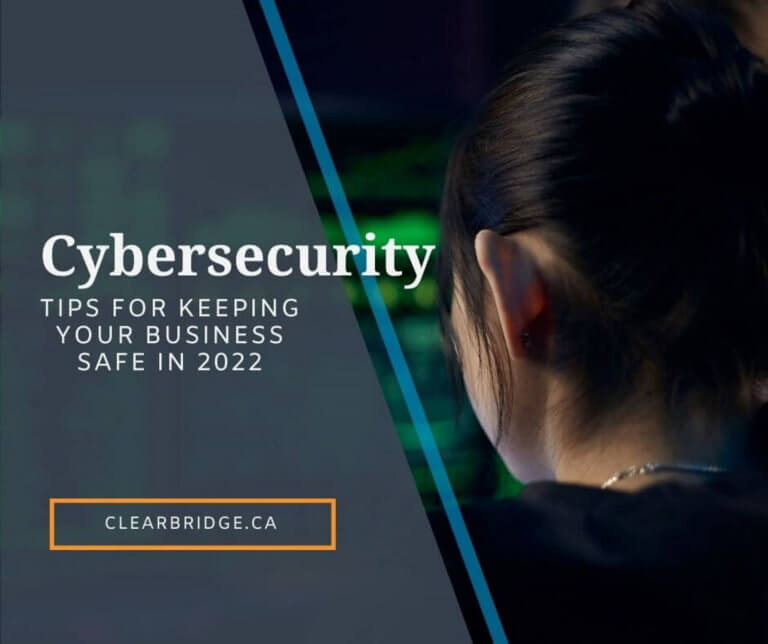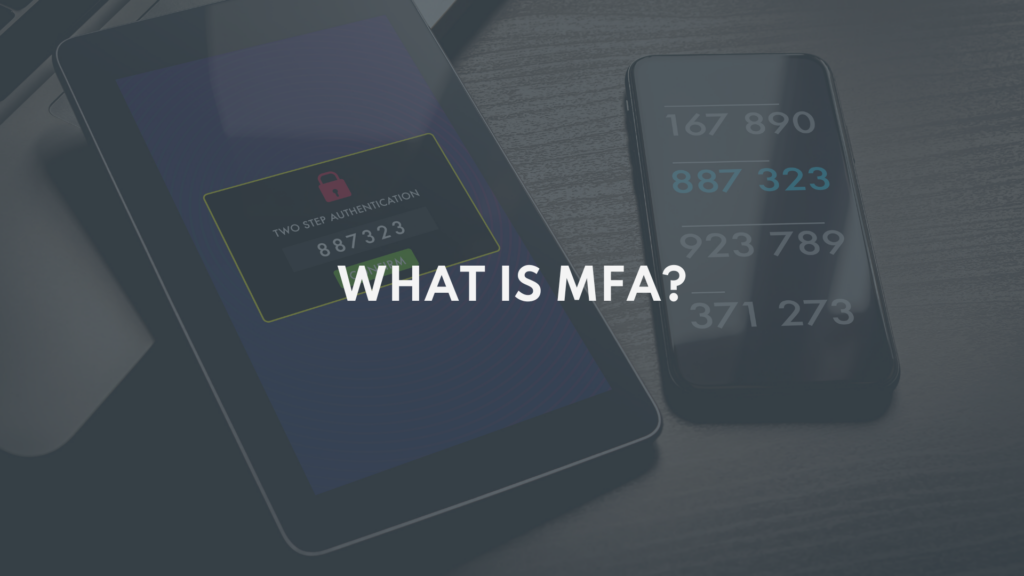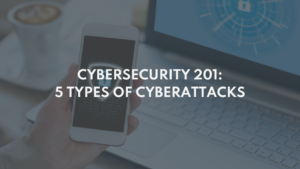We’ve declared 2022 the year of cybersecurity and this year, we’re committed to educating those around us around the risks and the ways they can protect their data, and their business. Interested? Keep reading!
When you think about hackers, scammers, and cybersecurity, what comes to mind?
You’re probably imagining a hooded individual sitting in a dark room, lit only by the din of their monitor.
And what are they doing? Typing. Furiously typing. With malicious intent.
It’s easy to imagine hackers as evil geniuses who understand computers in a way we never will. They’re seen as wielding magic keyboards, breaking into any government, bank, or home with the push of a button.
Quick question: did you learn about hackers from television and movies?
Don’t worry if you did, that’s the story for most people. And while it is entertaining, TV hackers don’t inform us about what real hacking is, or how to protect ourselves from it.
For better or worse, hacking is not nearly as cool as the movies make it seem.
And unless you’re working in tech, there’s a good chance everything you know about hackers is wrong.
But that all changes today.
At Clearbridge Business Solutions, we’re passionate about protecting you and your business from hackers while also empowering you to practice effective cybersecurity.


This overview will help you understand what areas make you vulnerable to hacking, and what you can do about it.
What is cybersecurity?
Cybersecurity is the practice of protecting your digital assets like your data, devices, systems, and networks from digital threats and attacks. More often than not, hackers compromise your cybersecurity through non-digital attacks such as phone calls and letters asking for personal information or money. These can feel legitimate, but aren’t.
Anything that connects to the Internet puts you at risk for a malicious cyber threat.
This includes:
- Smart devices
- Any website or ecommerce you visit
- Social media
- Cloud storage
- The servers in your office
- Any/all logins or accounts you use to access your data…anywhere
Being vigilant about cybersecurity is a lifestyle we encourage adopting, since cyberattacks are often aimed at interrupting business processes and sometimes even with the goal of extorting or accessing money or sensitive information.
Why is cybersecurity important?
No matter what industry you’re in, or how low-tech your work is, you need to know about cybersecurity and take steps to protect yourself from cyberattacks.
We operate in the digital world and everything from money to information is stored somewhere online. We all rely on the intricate infrastructure created by an increasingly connected world, and so it’s in our best interest to understand how being digitally secure impacts us and those around us.
For individuals, a cyberattack could result in identity theft or the loss of family photos due to a virus.
For businesses, a cyberattack could result in a data breach, if system security is weak, or through exploits, if software isn’t regularly updated and maintained.
And if that’s not enough incentive, in 2020, IBM reported the average cost of a data breach was a massive $8.64 million in the United States. You need to take steps to protect yourself and your business or cyber threats could end up costing you more than you realize!
Common cyber threats to be aware of
Here’s a quick breakdown of common cyber threats and how they can impact your business.
Virus or trojans
A virus is a code or program that infects your computer or mobile device and then replicates itself, infecting not only your devices but your network or other computers you’re connected to.
Adware or spyware
This is often downloaded along with free tools or pirated media and installed without your knowledge. It can result in your device passing information to unknown sources or displaying unwanted ads.
Ransomware or malware
If you end up having ransomware, your computer, servers, databases,or drives may be locked out until you pay to be let back in.
Here’s how Wikipedia puts it: Malware is any software intentionally designed to cause disruption to a computer, server, client, or computer network, leak private information, gain unauthorized access to information or systems, deprive users access to information or which unknowingly interferes with the user’s computer security and privacy.
Browser hijacking
Have you ever typed in a web address only to be redirected somewhere else entirely? This could be browser hijacking, where a hacker takes over your browser and sends you to web pages they want you to visit.
Social engineering
This is a tactic used to trick you into revealing sensitive information through offering incentives, spoofing a trusted source, or acting like a game or quiz. It’s often combined with other cyber threats so you end up clicking on malicious links or downloading malware.
In my view/experience, this is the MOST SIGNIFICANT threat to most businesses out there. —Ryan Kononoff, CEO of Clearbridge Business Solutions
Phishing emails
Even if you don’t know the term, you’ve likely seen a phishing email. It’s designed to get you to click on a link and lead you to a phishing site. The problem? Though it looks like a legitimate website, it’s not. When you’re prompted to enter sensitive data like your username or password, you’re giving your information to a hacker.
Internal threats
Anyone who has access to your systems or networks could be a cyber threat. Sometimes they abuse their privileges, other times they are coerced through social engineering. Only grant access to current employees or contractors, update your security regularly, and use multi-factor authentication to protect your data. And above all else, train your employees on cybersecurity best practices.
Cybersecurity best practices
It’s easy to assume hackers will bypass you because you’re a small business and don’t have anything to steal. But this just isn’t the case anymore. If you’re online then you’re at risk, and it’s important to follow these best practices.
Document your cybersecurity policies
Simply having a policy isn’t enough. Your employees need to know what the expectations are, and how to keep their workstations safe. Document your policies and keep them updated.
Follow secure password practices
Since the majority of data breaches happen due to lost, stolen, or weak passwords, being vigilant about passwords is necessary. Create a password policy, educate your employees on why it matters, and enforce it.
Use multi-factor authentication
MFA drastically improves the security of any asset, digital or physical. Before access is granted, two or more unique forms of verification are required. Again, this is an extra step your employees may want to skip. But having MFA in place protects your business and your employees so it’s an important addition to your cybersecurity plan.
Install security software (like anti-virus and anti-malware)
As vigilant as we think we are, it’s easy to be tricked into clicking links and downloading attachments. This simple mistake could install malware onto your employee’s computer, putting your entire network at risk. Having anti-virus and anti-malware software running will alert you right away if this happens so you can deal with it immediately.
Backup your data
Backing up your data is necessary for tangible reasons like fires and floods, but it’s also important for cybersecurity. Make a habit of backing up all data in multiple places, everything from databases to human resources files.
You must protect yourself and your employees from cyber threats and make it a top priority. Starting in 2021, we started to observe many of our customers’ insurance providers asking for specifics on how much they were spending on cybersecurity on an annualized basis as part of their risk assessment and analysis.
If you run a business in 2022, cybersecurity is no longer optional. Your business literally depends on it.
The good news is, you don’t have to figure this out on your own. Having a knowledgeable and reliable IT security company in your arsenal is one of the best ways to stay up-to-date with your cybersecurity.
If it’s time to upgrade your current digital security system then get in touch. We’d love to explore what a partnership could look like.
We have a constantly growing library of cybersecurity content meant to help protect you from external threats.
Check it out here


What is MFA?
While there's no such thing as 100% protection in cybersecurity, MFA hits pretty darn close to where account security is concerned! It drastically improves the security of ANY asset, digital or otherwise, and it's one of the easiest to implement. Read more about it today!


Cybersecurity 201
In this follow-up to our Cybersecurity 101 webinar, we cover five different cyberattacks businesses should be aware of, the costs involved, real-life examples of each attack, and some best practices you can use to keep your business safe.


Create Secure Passwords
Setting up passwords is…annoying. ESPECIALLY when they ask for a mix of letters, numbers and symbols! How are you supposed to make a password that's both secure AND easy to remember? We've got you covered here

